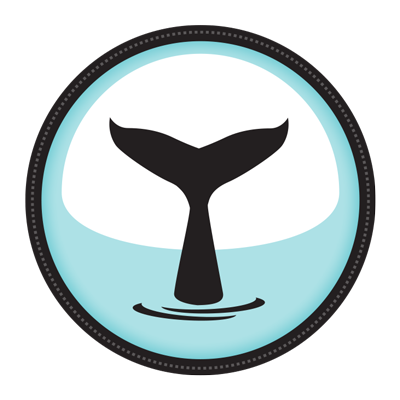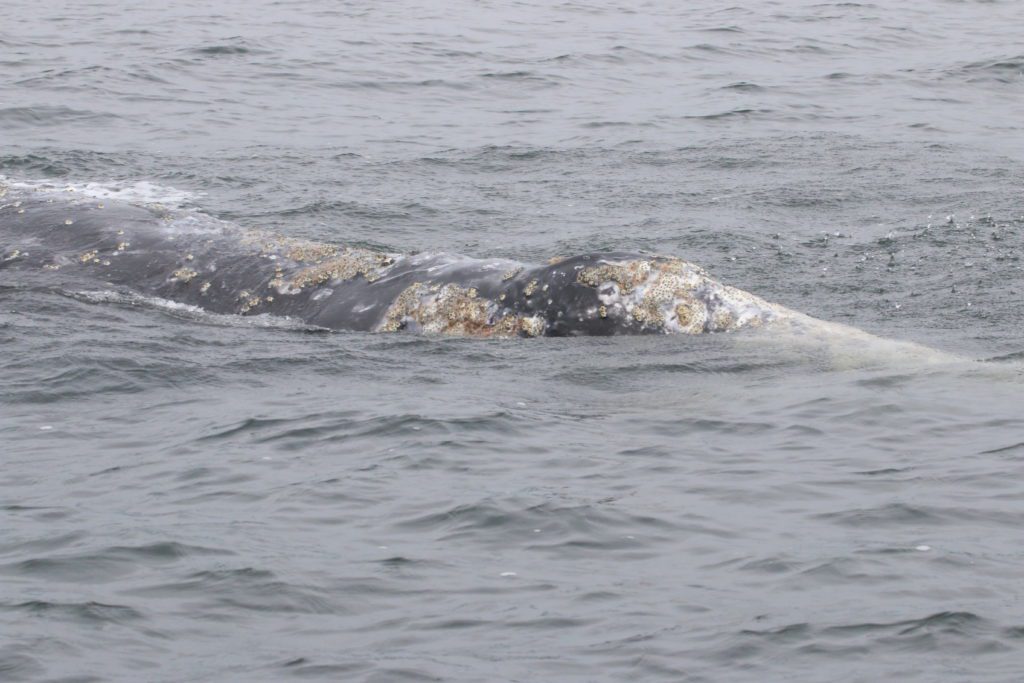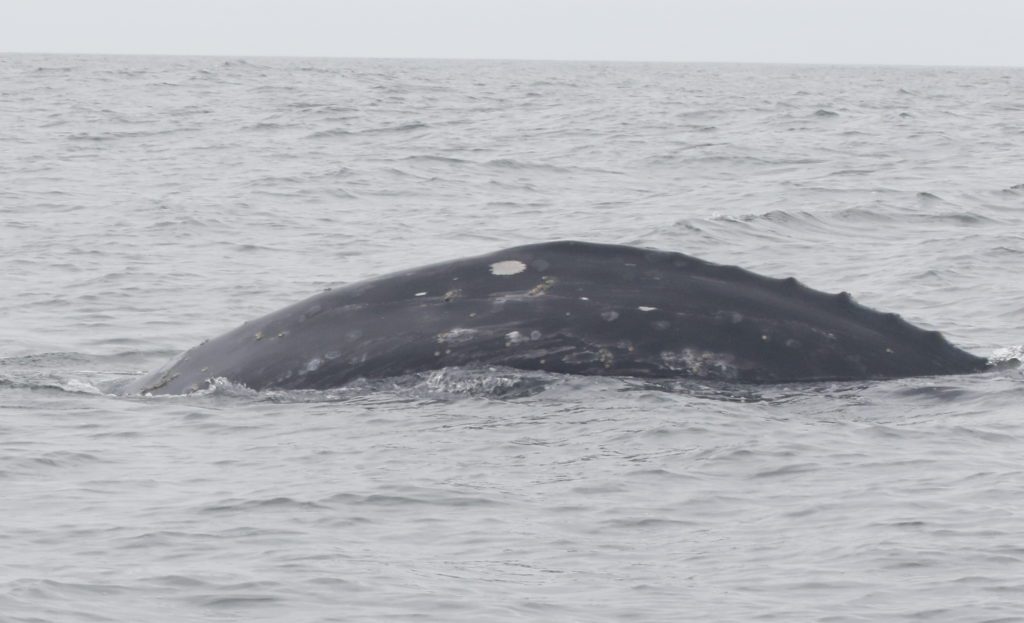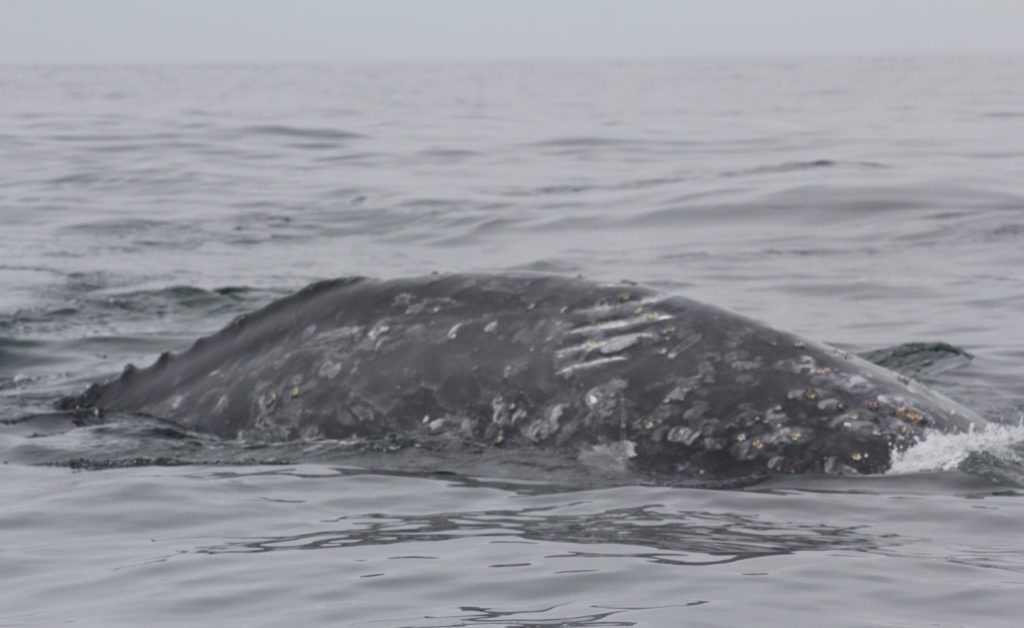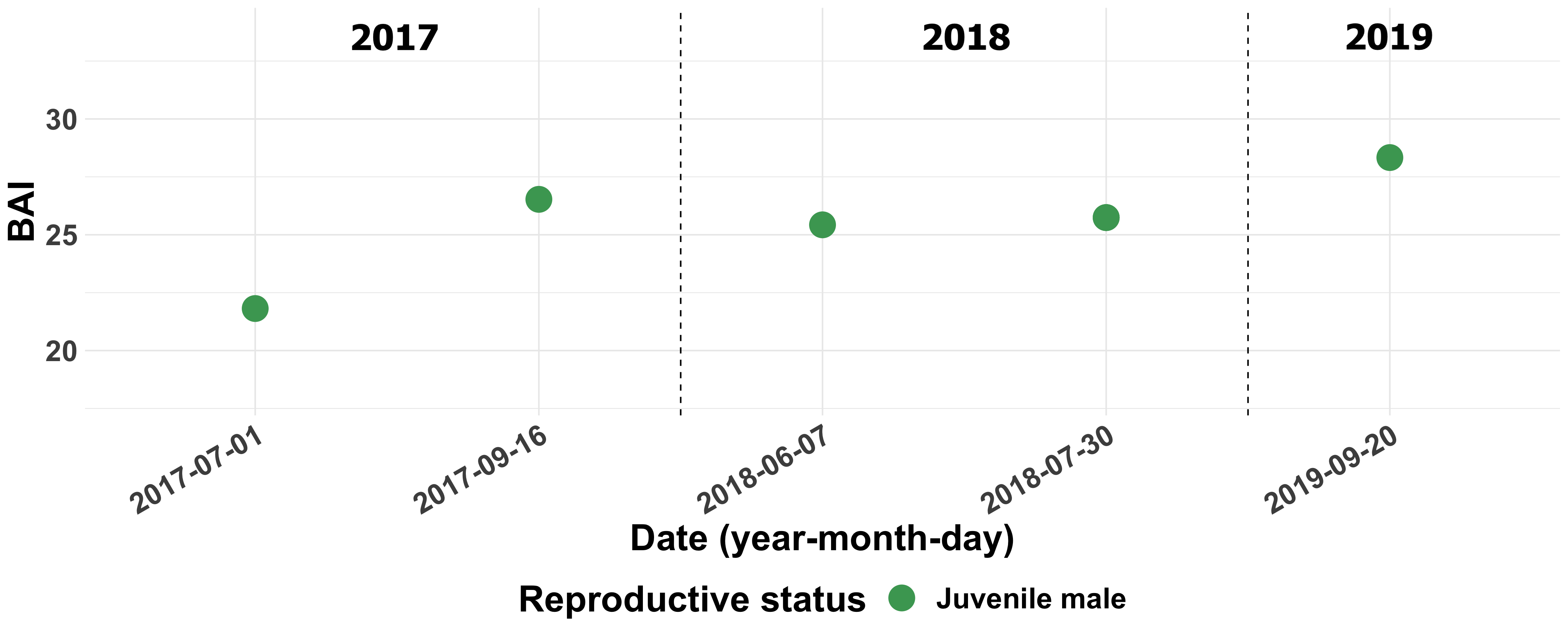“Equal” is a male gray whale that was first observed in 2015, making him about 9 years old (as of 2024). Equal is an important whale in our dataset because we observed and documented a traumatic event in his young life, which has significantly helped us understand whale stress levels.
On June 19th, 2018 we saw Equal by Yaquina Head near Newport and he looked healthy and normal. But, when we observed Equal the next day (June 20th, 2018) we documented fresh cuts on his back, which are likely from a boat-strike. We collected a fecal sample from Equal on the 20th, within 24 hours of this injury, and analyzed the stress hormone levels (cortisol concentration). In comparison to the cortisol concentration of two previously collected samples from Equal (28-Aug-2016: 8.11 ng/g; 01-Jul-2017: 4.41 ng/g), Equal’s cortisol concentration on June 20thwas three times higher (22.01 ng/g). Clearly poor Equal was stressed out! While this event was sad for Equal, it allows us to “validate” the stress hormone levels of whales. We documented a dramatic change in cortisol concentration and can confidently link it with a known stress event (the boat-strike injury), allowing us to interpret cortisol values of ~22 ng/g in a gray whale fecal sample as indicative of a “stressed-out whale”. Studying the stress levels of whales is challenging because although we can quantify concentration levels, understanding what is “high” and what is “low” is difficult until we capture “validation events” like we did with Equal.
Equal recovered from this boat-strike event, and we have observed him many more times foraging in the Newport and Depoe Bay region. He is a survivor, and we are using his story to help us understand the causes, thresholds, and recovery times of whale stress.

